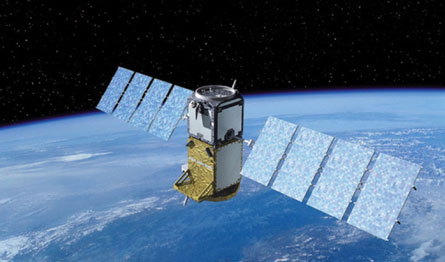The European Space Agency's second Galileo global navigation satellite system demonstrator, Galileo In-Orbit Validation Element (GIOVE)-B, was successfully launched on 27 April by a Starsem Soyuz-Fregat launcher from Russia's Baikonur spaceport in Kazakhstan.
Like its GIOVE-A predecessor, launched in 2005, GIOVE-B carries two redundant small-size rubidium atomic clocks, each with a stability of 10 nanoseconds per day. But it also features an even more accurate payload: the Passive Hydrogen Maser (PHM), with stability better than 1 nanosecond per day. The first of its kind ever to be launched into space, this is now the most stable clock operating in Earth orbit. Two PHMs will be used as primary clocks on board operational Galileo satellites, with two rubidium clocks serving as back-up.
 |
|---|
GIOVE-B also incorporates a radiation-monitoring payload to characterise the space environment at the altitude of the Galileo constellation, as well as a laser retroreflector for high-accuracy laser ranging.
Signal generation units will provide representative Galileo signals on three separate frequencies broadcast via an L-band phase array antenna designed to entirely cover the visible Earth below the satellite.
The satellite is now under the control of Telespazio's spacecraft operations centre in Fucino, Italy, and in-orbit checking of the satellite has begun.
The next step in the Galileo programme will be the launch of four operational satellites, to validate the basic Galileo space and related ground segment, by 2010. Once that in-orbit validation phase is completed, the remaining satellites will be launched and deployed to reach full operational capability, a constellation of 30 identical satellites.
Source: Flight International























